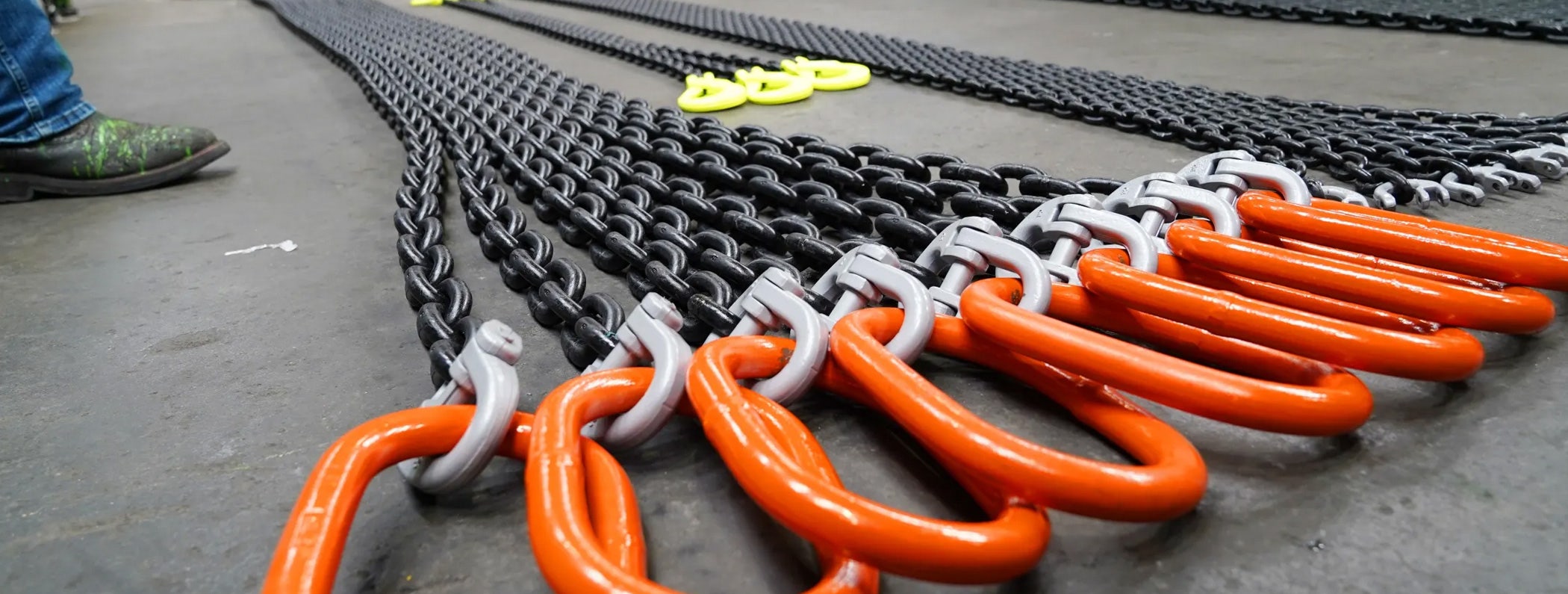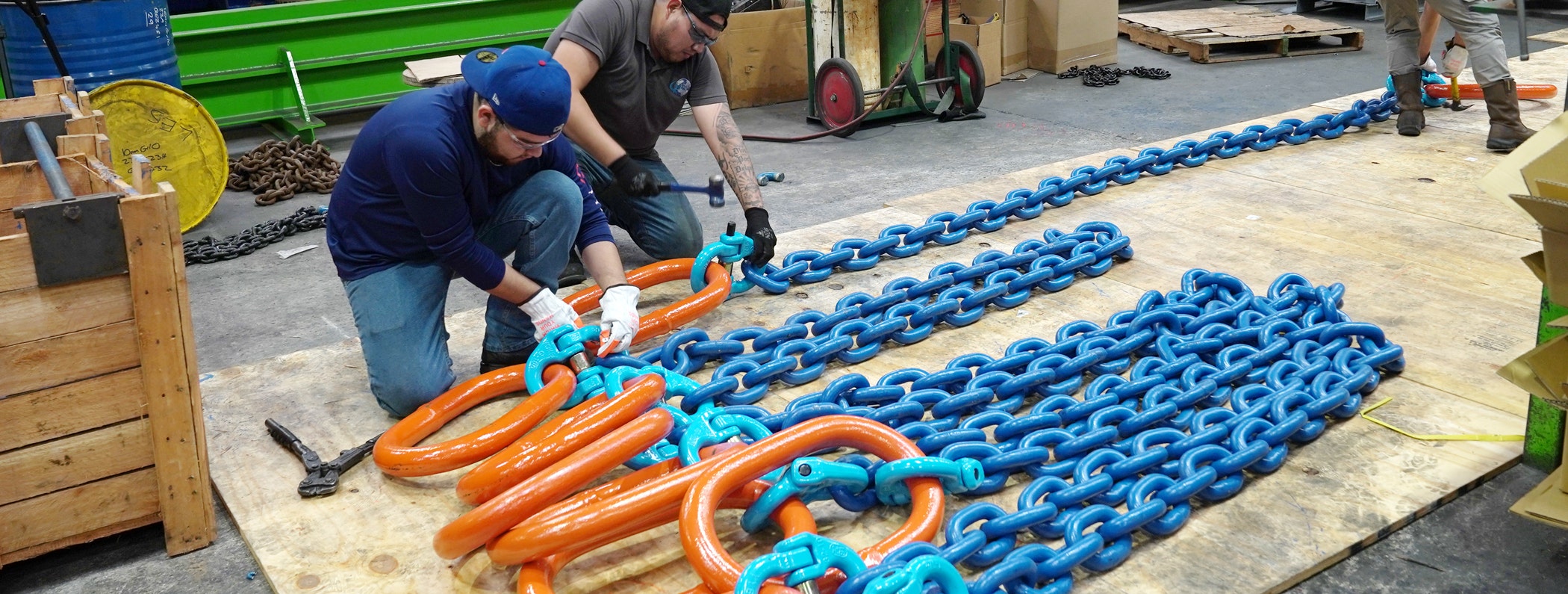Inspection and Maintenance Guidelines for Synthetic Web Slings
Synthetic web slings are no less than a scientific marvel. You can use them in virtually any lifting or rigging application. They are lightweight, highly flexible, affordable, and durable. Most importantly, they can easily mold to the shape of a load. So, they are fit for rigging delicate and highly finished loads because there is less risk of marring or scratching. Many industries, including shipping, mining, construction, and manufacturing, use synthetic slings regularly.
The sling material often consists of synthetic fibers like polyester or nylon. They come in various standardized sizes. You can choose a suitable sling depending on your rigging application or the type of load.
However, you do need to consider a few things when using synthetic web slings. Otherwise, you may risk damaging the load and/or injuring your crew.
1. Critical Safety Issues To Consider When Using Synthetic Web Slings
Web slings are a type of synthetic slings suitable for handling delicate and oddly shaped loads. Although they are sturdy and durable, you do need to consider a few safety issues. Here’s what you need to keep in mind before each use.
a. Never Exceed Rated Load Capacity
One of the first things you need to keep in mind is never to exceed a web sling’s rated capacity. You can see it on the identification tag. Always find out the weight of the load. Make sure it never exceeds the rated capacity of the web sling.
b. Choose Appropriate Sling Configuration
When required, you can select a combination of synthetic lifting slings based on working load limits. You also need to take the size, weight, and type of load into account. Other factors you need to consider are the type of hitch, web sling types, and work environment.
c. Train All Your Rigging Crew
Make sure to train all web sling users. It is a must to ensure the safety of your crew and the load. Both the American Society of Mechanical Engineers (ASME) and the Occupational Safety and Health Administration (OSHA) guidelines state that only a well-trained or qualified person should use lings. As an employer, you should train new crew members before asking them to rig or lift a load.
d. Understand How Web Slings Work
Although strong, web slings do have rigging limitations. To ensure safety, you should never let any of your crew stand under or near a suspended load. They should also never stand in line with or next to rigging under tension.
The rigged load can become snugged or hung-up during handling. Also, if the sling breaks in either situation, it can lead to a fatal accident. In short, every crew member needs to understand how web slings react under tension or when rigged.
e. Synthetic Slings Must Be Inspected Before Each Use
Even slightly damaged slings are highly likely to fail during rigging. In other words, sling inspection is a must before each use. Check each sling for visible damages such as holes, cuts, abrasions, corrosion, and web color fading. In addition to this, regular inspection from experts is also recommended, which we will cover later in this post.
f. Ensure Proper Maintenance
Apart from UV light degradation, web slings are also susceptible to heat, chemical, environmental, and mechanical damage. However, proper storage and maintenance can extend the life expectancy of slings. We will discuss web sling maintenance in detail later in this post.
2. Dos And Don’ts When Using Web Slings
Apart from these standard safety issues, there are a few other things you need to keep in mind when using web slings. For your convenience, we have divided these points into Dos and Don’ts.
a. Things to DO When Using Web Slings
- Do check the manufacturer’s reference chart, code number, and identification tag before proceeding.
- Visually inspect the sling before using it.
- Remove damaged slings from use immediately.
- Always shorten or adjust slings using appropriate methods.
- Make sure the sling choking action is on the webbing, not the hardware.
- Always use web slings made from suitable raw material.
b. Things NOT to DO When Using Web Slings
- Never drop or drag web slings across floors or any other abrasive surfaces.
- Don’t pull slings from under the load when it is resting on the sling.
- Don’t twist, kink, or knot the slings.
- Never expose web slings to damaging chemicals or surfaces.
- Don’t expose slings to extreme heat or cold. The acceptable temperature range is minimum -40°f and maximum 194°f.
- Avoid tip loading a sling on a hook. Always center the sling in the base or bowl of the hook.
- Don’t use hooks, shackles or other hardware with sharp edges.
- Never drop web slings with metal fittings.
- Don’t set down the loads on top of slings.
- Do not weld a load hung from a sling or near a sling.
- Never place stich patterns on web slings around sharp corners, hooks, or choker bearing points.
- Never run or drive a vehicle or any other equipment over slings.
- Don’t walk over or stand on slings.
3. Conduct Thorough Web Sling Inspection
Regular sling inspection and its documentation are quite essential. It ensures not only OSHA compliance but also the safety of your crew. The two most common industry standards for sling inspection are OSHA 1910.184 and ASME B30.9. You need to follow these standards.
Usually, a designated person can carry out a routine inspection. But you do need a qualified person to conduct the periodic inspection. There are three types of sling inspections that you need to carry out.
a. Initial Inspection
The initial inspection is to be done before using a web sling for the first time. Generally, you should do this after receiving the slings from the manufacturer. This inspection helps you determine if the sling is:
- As per required specifications.
- The required rated load capacity.
- Free of any damages or defects.
b. Frequent Inspection
As the name suggests, you need to conduct this sling inspection before each use. You should appoint a designated and competent person to do this inspection. It is a primarily visual inspection to check the web slings for potential damage or defects. It also helps you determine if the web slings are suitable for the intended rigging or lifting job.
c. Periodic Inspection
This sling inspection needs to be performed by a certified professional or a qualified crew member. Generally, an annual inspection (carried out once a year) is enough. However, the frequency of periodic sling inspection depends on the following three critical factors.
- How frequently the sling is used.
- The working environment or the service conditions.
- How long the sling was in service or the service life of sling.
- What lifting applications the sling is used for or the type of lifting or rigging applications.
Usually, higher usage frequency and more sever working conditions mean you will need to inspect the slings quite often. ASME makes the following sling inspection recommendations based on the severity of the work environment.
- Normal Work Conditions: Annual periodic inspection is enough if you are using slings under normal working conditions.
- Severe Work Conditions: For severe and moderately severe work conditions, the period inspection needs to be carried out every month or quarter.
- Special Work Conditions: There are the harshest possible work conditions. So, you will need to consult a Qualified Person to decide how frequently you should inspect the slings.
Removal Criteria
Web slings are designed to last under harsh work conditions. However, they are bound to wear out over time. If you come across the following deformities or defects, remove the web slings from use immediately.
a. Abrasions
Frayed web fibers and uneven or disoriented yarn surfaces are often a sign of abrasions. If you can see the warning yarns, the damage is quite serious. You should replace such slings immediately.
b. Acid Damage
Acid damage occurs when slings get exposed to acidic conditions or materials. Distorted or charred webbing is a sign of damage by acids or other corrosive liquids. This damage severely affects the strength of a sling. If you find this damage, you must discontinue the slings from use.
c. Cuts
Cuts are easily noticeable. They can be caused by excessive tensions or sharp objects. Using web slings for lifting sharp-edged loads is one of the common reasons behind this type of damage. You should never use a sling, even if it has a minor cut.
d. Tensile Damage
Excessive loading can cause tensile damage. Fuzzy-looking web yarn is often a sign of tensile damage. If you see this sign, discontinue using the sling right away.
In addition to these, you will come across a few other signs of potential damage or reduction in strength. Remove the web slings from the use immediately if you see any of the following signs.
- Faded webbing color.
- Disoriented or fuzzy webbing surface yarn.
- Shortened sling length.
- Visible reduction in elasticity and/or strength.
- Stiffened web yarn.
- Acid or caustic burns.
- Melting, corrosion, or charring of any part of the sling.
- Holes, tears, cuts, knots or snags in any part of the sling.
- Worn out stitching, especially in load-bearing splices.
- Missing or illegible identification tag.
- Any other visible change that indicates damage or abuse.
Synthetic Web Slings Maintenance Tips
As they are often subject to punishing work conditions, slings will get damaged eventually. However, you can certainly extend their life with proper maintenance. Keeping the following things in mind can help you maintain slings in excellent condition for a long time.
- Always store web slings in a cool and dry place. It prevents them from heat and water damage.
- Keep them off the ground. It will protect the slings from accidental spills. They are also a tripping hazard when lying around on the floor.
- Keep the slings in a locker or a rigging box. Make sure they are easily accessible.
- It is necessary to keep the slings clean. However, never clean them in a solvent tank. Chemicals used in a solvent can damage the slings.
- Keep web slings away from sunlight or UV light to prevent degradation.
- Nylon and polyester have different chemical resistance properties. While nylon is resistant to acids, polyester isn’t. On the other hand, polyester is resistant to aldehydes, but nylon isn’t. You will need to take appropriate precautions depending on the web sling material.
Over to You
Synthetic web slings are versatile, durable, and cheap, which makes them a popular rigging and lifting choice. But they do have limitations and require regular care. It can help ensure your safety and increase the life expectancy of slings. Hopefully, after reading this post, you will understand the nitty-gritty details about web sling inspection, maintenance, and overall safe usage. You can reach out to the rigging experts at HHI for more information or buying suitable web slings. We can help you with all things rigging and lifting.
Shop Online Web Slings







